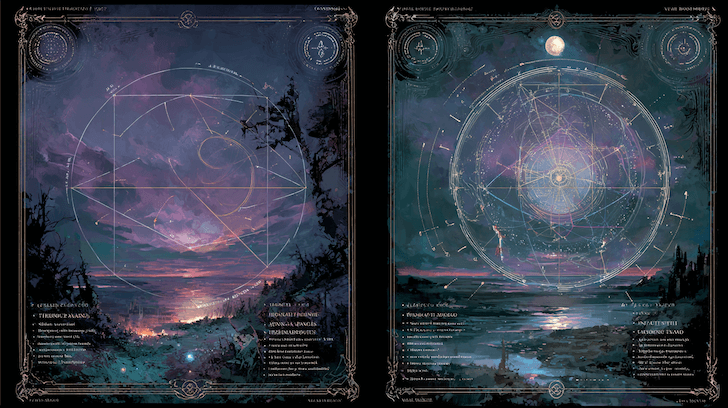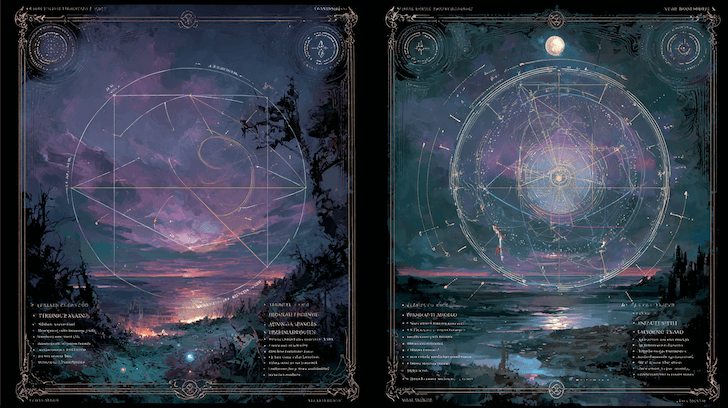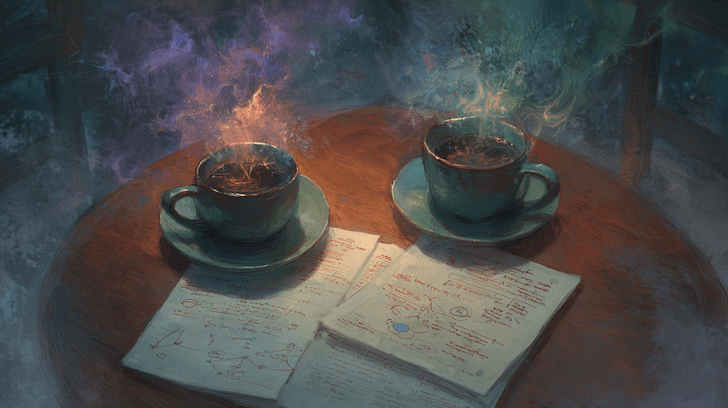What Is Synastry in Astrology?

Synastry is the branch of astrology that studies how two people’s birth charts interact. It’s how astrologers explore relationship chemistry, compatibility, and shared growth—whether in love, friendship, family, or collaboration.
In synastry, your planets are placed around another person’s chart to see how their energies connect. The aspects, houses, and patterns between them reveal how you impact each other emotionally, mentally, and spiritually.
How Synastry Works
A synastry chart overlays two natal charts—yours and another person’s—so astrologers can examine how planets and angles interact. Each planet in your chart forms aspects (angles) with planets in the other chart, showing how your energies combine or clash.
For example:
- Your Sun trine their Moon = natural emotional understanding.
- Your Venus square their Mars = strong attraction, but tension in rhythm or needs.
- Their Saturn on your Ascendant = structure, commitment, or constraint in how you express yourself.
Every connection adds a layer to the relationship story—affection, support, challenge, attraction, or karmic depth.
Key Elements in Synastry
- The Sun and Moon describe overall harmony and emotional balance.
- The Ascendant–Descendant axis shows chemistry and physical attraction.
- The Venus–Mars connection reveals desire, romance, and creative magnetism.
- The Mercury aspects describe communication flow—mental compatibility or misunderstanding.
- The Saturn and outer planet contacts show long-term lessons, transformation, and shared evolution.
- House overlays reveal where each person activates the other’s life areas (e.g., 7th house = partnership themes).
Understanding Compatibility
Synastry doesn’t predict whether a relationship will “work.” Instead, it highlights how two people fit together—and what they’ll teach each other. Even challenging aspects can build intimacy when handled consciously. Trines and sextiles bring ease, while squares and oppositions build tension and momentum.
| Aspect Type | Meaning in Synastry |
|---|---|
| Conjunction | Strong resonance—shared focus and magnetism |
| Trine | Natural harmony and support |
| Sextile | Ease and opportunity for cooperation |
| Square | Dynamic friction that sparks growth (and conflict) |
| Opposition | Complementary pull; attraction and polarity |
Compatibility isn’t about smooth charts—it’s about engaged awareness. A few challenging aspects often create depth, not disaster.
Planets That Matter Most
In synastry, some planets speak louder than others:
- The Sun shows ego and vitality compatibility—core life direction.
- The Moon reflects emotional security and comfort together.
- The Venus and Mars pair describe love language and passion.
- The Mercury connection tells how easily you communicate.
- The Saturn aspects reveal endurance, lessons, and karmic contracts.
- The Uranus, Neptune, and Pluto contacts bring change, inspiration, and transformation.
These planetary interactions show where the relationship feels easy, fated, or demanding—and how each partner experiences the other’s influence.
House Overlays
Each person’s planets fall into the other’s houses, showing which areas of life they activate:
| House Activated | What It Means |
|---|---|
| 1st House | You see the other person as part of your identity; strong mutual recognition |
| 5th House | Romantic chemistry, play, and creativity |
| 7th House | Serious partnership themes; attraction and mirroring |
| 10th House | Shared ambition, public life, and status influence |
| 12th House | Psychic bonds, healing, or confusion; can feel karmic |
These placements explain why some relationships feel instantly familiar or deeply personal—certain house activations create lasting emotional resonance.
Timing and Transits
Astrologers sometimes layer transits or progressions onto synastry charts to see when dynamics intensify or shift. When outer planets activate key synastry points, relationships often hit turning points—beginnings, transitions, or endings.
- Transiting Saturn brings commitment or restructuring.
- Transiting Uranus sparks change and redefinition.
- Transiting Neptune adds idealism—or fog.
- Transiting Pluto transforms the bond completely.
Synastry vs. Composite Charts
| Focus | Synastry | Composite |
|---|---|---|
| What It Shows | Interaction between two individuals | The relationship as a single entity |
| How It’s Made | Overlay of one chart on another | Midpoint average of both charts |
| Best For | Understanding chemistry and compatibility | Understanding relationship purpose and trajectory |
Think of synastry as how you and another person dance together. The composite chart is the music you create.
Tips for Reading Synastry
- Start with Sun–Moon–Ascendant connections—they define basic compatibility.
- Look at Venus–Mars aspects for attraction and energy balance.
- Check Saturn contacts for long-term potential and boundaries.
- Pay attention to house overlays to see which life areas are activated.
- Notice patterns—do multiple aspects repeat the same theme?
- Use transits carefully; they can activate existing synastry dynamics rather than create new ones.
Conclusion
Synastry helps you understand why certain people feel magnetic, supportive, or challenging—and how every relationship can become a mirror for growth. It’s not about compatibility “scores” or simple answers; it’s about seeing how two energies dance, teach, and transform each other over time.
What Is a Composite Chart in Astrology?

Astrology and Love Life

Get Your Birth Chart
Calculate your complete astrological chart with precise astronomical data based on your birth time and location
Generate Chart